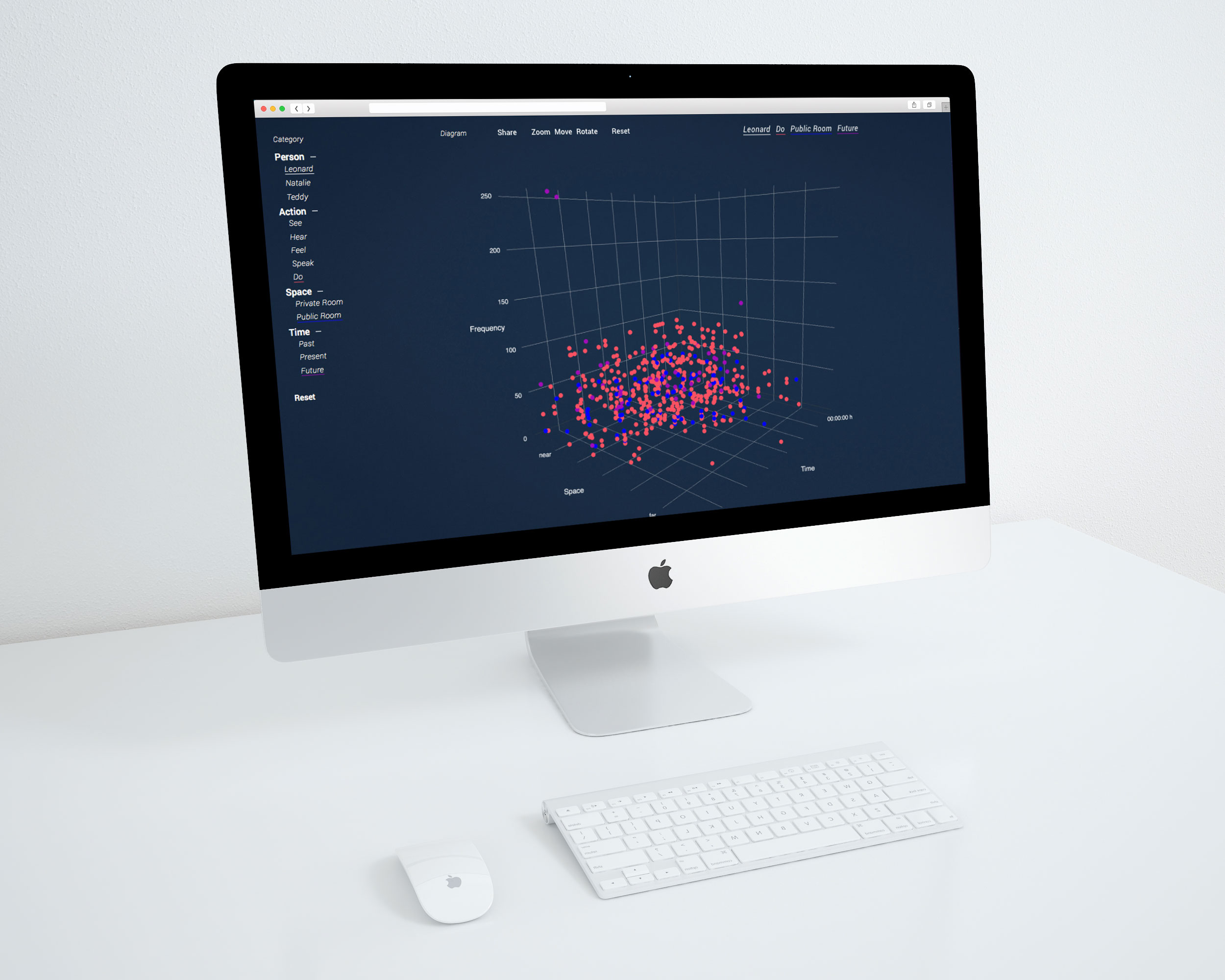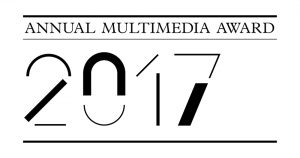
10 minute man. data memento.

Christopher Nolan’s thriller »Memento« is about an alleged murder, its investigation and revenge. The particular attraction, however, does not lie in the plot, but in the intelligent narrative structure, which takes up the issue of memory loss. This stylistic device becomes an elementary component of the interactive data visualization »10 Minute Man. Data Memento. «.
The user becomes a director and creates bizarre stories. “A person – acts – in a place – at a certain time.” These are the four parameters from which every narration is built and from these very parameters obscure data formations arise in a 3D diagram. The starting point is the film script – 9935 words in 113 minutes. The language, consisting of the individual words, is located in terms of time and space. The word frequency, the time of the spoken word and the person’s position at the moment of speaking form the variables of the visualization. The result is an artistic product that merges narrative, archival and aesthetic elements.
For every film, the script forms the basis, the textual basis. This contains all information about the visible and audible action. The script is thus the central point of coordination of the various optical and acoustic film elements.
The language in the film is located and visualized spatially and temporally. In addition to the narrative structure, the narration itself is also taken up in the data visualization, as it also forms a central component of the film. At this point the user is included in the data visualization. Just as the narration in the film is defined and designed by the director, the narration of the data visualization should also be controlled by the user. The basic building blocks of a story are the parameters of person, action, space and time, from which each story is composed. A person acts in a specific place at a specific time. These modules should be determined by the user himself. In this way, the user influences the data visualization, time and space.

